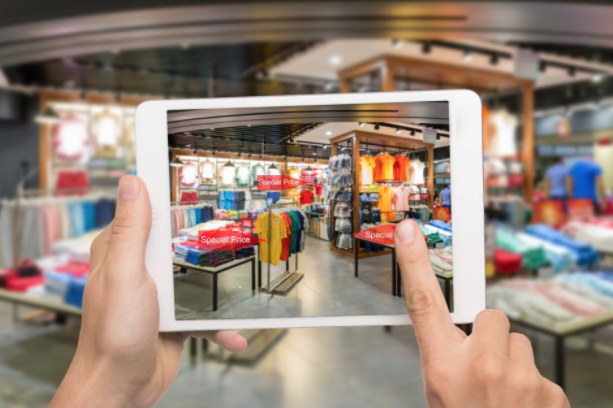How Virtual Reality Will Change Storytelling and Marketing in the Next Decade
Virtual Reality (VR) is simply a technology that can create a simulated environment. This technology is winning more hearts than ever before, and clearly, it is here to say. Brands like Vroom, Marriott International, McDonald’s, Adidas, etc. are already giving the test of VR to their customers to get a greater grip over them. If you are planning to learn virtual reality, it is the right time.
According to the latest predictions, VR usage in the retail industry is expected to grow over 200% by the end of 2020. In fact, as of today, there are over 170 million users of VR worldwide. The demand for VR devices is also multiplying and is expected to become 16 times higher from 2018 to 2022. In 2019 alone, 14 million AR and VR devices were sold, and that is a record in itself.
Marketers are aware that the sooner they start using VR in their promotional activities, the better. However, for some brands, VR’s growing popularity can be a challenge as once customers become accustomed to VR, attracting them with other marketing tools can be difficult.
Storytelling, which is the most powerful marketing tool, is also expected to change in the presence of VR. Here is a discussion on how possibly storytelling and marketing can differ from the presence of VR.
Changes In Storytelling
Storytelling is one of the most consistent components of marketing, and with time it has only evolved. With storytelling, brands try to connect with their consumers on an emotional level, and they make their products and services more relatable. This marketing tool helps in enhancing the customers’ interests regarding a brand’s journey.
If marketers can apply storytelling skills strategically, they can easily keep the target customers hooked. With VR, the customers can visually represent a brand’s journey from the very beginning. The customers can understand all the efforts a brand puts in to offer the end products to its customers. Hence, VR can make storytelling a more effective marketing tool to generate new leads and retain existing customers.
Better consumer experience
With VR, consumers can have some rare experiences that regular marketing tools fail to provide them. Hence, the applications of VR leave a good impact on the customers, and their purchasing decision is also made accordingly.
The use of VR teaches the marketers to project their products and services in more creative ways so that consumers can develop an instant liking towards them. For example, a fashion brand can use VR in such a way that customers can find any product from different racks and can try them on.
Greater product demonstration
Product demonstrations could not get any better with the presence of VR technology. It is a common tendency of all customers to try the products they are planning to purchase. Customers always prefer investing their money in something that fits them. Hence, getting a demonstration always remains their priority.
For example, the hospitality industry and the real estate industry can gain profitability with VR applications . This technology can provide the target customers with a real-life experience of how a property can be for staying. Accordingly, they can make decisions regarding their stay or lease.
The marketers of these industries can even attract customers sitting in different locations. This is the beauty of VR, as customers can enjoy its advantage sitting in different locations of the world.
3 Brands that are using VR technology like a pro
Are you still confused regarding the use of VR technology for storytelling and marketing purposes? Here are 3 top brands of the world that are using VR technology as a strong marketing tool. Here them out.
Adidas
Adidas has always been a brand with a vision. This brand had integrated VR technology to tell its story back in 2017. At that time, Adidas had partnered with a tech marketing agency to show the mountain-climbing journey of Ben Rueck and Delaney Miller.
To make the most of this marketing campaign, Adidas used VR so that the audiences can enjoy the entire session with a 360-degree view. All the audiences had to do was use a VR headset and two sensory remote controls.
This campaign was an instant hit among the viewers because it gave the essence of an adventure that many had dreamt of. This campaign was perfectly aligned with Adidas’ brand image since this brand’s tagline is “Impossible Is Nothing.”
TopShop
TopShop is an emerging fashion brand that has changed its customers’ experience by using VR technology strategically. TopShop used VR to give the customers a real-time experience of their London based fashion show, even though they were not present physically.
The viewers had to wear a VR headset to get the feel of attending a fashion show directly. The viewers were pleased with this initiative as they could watch the entire fashion show and top celebrities who attended the show.
Vroom
Online car retailer Vroom has been applying VR technology in the most innovative way possible. The Vroom showroom is powered by VR, where potential customers can check-out the vehicles using Google cardboard.
This showroom offers you real-life experience with some cool VR applications like 360-degree test drive views, real-life experience of car models, hearing engine sounds, and whatnot! Vroom has made it very easy for its target customers to make their purchase decisions from the comforts of their homes.
The way Vroom has applied VR technology can indeed be an example of how retailers can be more creative in their marketing approach with VR technology. Conversion of leads into regular customers is also much easier for Vroom due to the implementation of this technology.
Final words
Understandably, VR technology has created some revolutionary changes in storytelling and marketing. This technology has the potential to hook customers more than ever before, and that is the reason why its popularity is increasing rapidly. VR technology is expected to bring more breakthroughs in marketing very soon.

